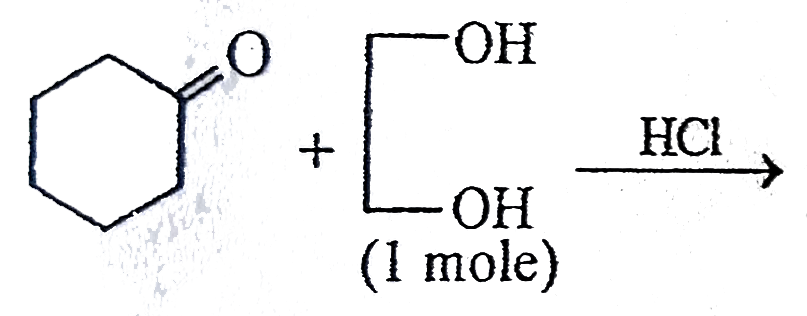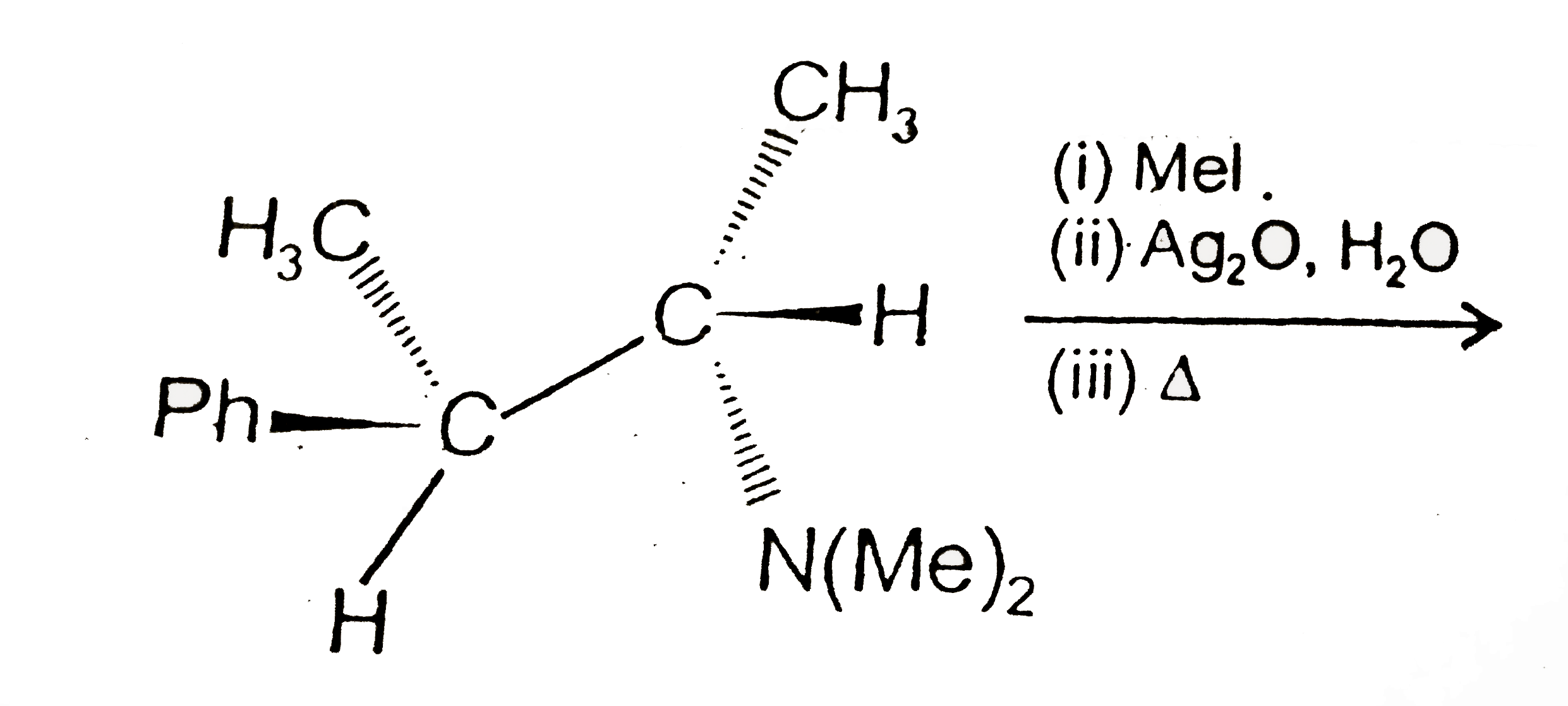Select the major product obtained from the addition of HBr to 1-methylcyclohexene.
1-bromo-2-methylcyclohexane
6-bromo-1-methylcyclohex-I-ene
3-bromo-1-methylcyclohex-1-ene
1-bromo-1-methylcyclohexane
The correct Answer is:D
To determine the major product obtained from the addition of HBr to 1-methylcyclohexene, we can follow these steps:
Step 1: Identify the Reactants
The reactant is 1-methylcyclohexene, which has a double bond in its structure. The addition reaction involves HBr, which is a polar molecule.
Step 2: Understand the Mechanism of Addition
When HBr is added to an alkene, the double bond acts as a nucleophile and attacks the hydrogen (H) from HBr. This results in the formation of a carbocation intermediate.
Step 3: Formation of the Carbocation
The double bond in 1-methylcyclohexene will preferentially bond with the hydrogen atom from HBr. Since the double bond is attached to a carbon that is also attached to a methyl group, the carbocation formed will be a tertiary carbocation (3°), which is more stable due to the electron-donating effect of the adjacent methyl group.
Step 4: Nucleophilic Attack by Bromide Ion
After the formation of the carbocation, the bromide ion (Br-) from HBr will attack the positively charged carbon atom of the carbocation. This leads to the formation of the final product.
Step 5: Determine the Major Product
The final product formed from this reaction is 1-bromo-1-methylcyclohexane. This compound has the bromine atom attached to the same carbon that was originally part of the double bond, which is now a single bond after the addition.
Final Answer
The major product obtained from the addition of HBr to 1-methylcyclohexene is 1-bromo-1-methylcyclohexane.
---
The reactant is 1-methylcyclohexene, which has a double bond in its structure. The addition reaction involves HBr, which is a polar molecule.
When HBr is added to an alkene, the double bond acts as a nucleophile and attacks the hydrogen (H) from HBr. This results in the formation of a carbocation intermediate.
The double bond in 1-methylcyclohexene will preferentially bond with the hydrogen atom from HBr. Since the double bond is attached to a carbon that is also attached to a methyl group, the carbocation formed will be a tertiary carbocation (3°), which is more stable due to the electron-donating effect of the adjacent methyl group.
After the formation of the carbocation, the bromide ion (Br-) from HBr will attack the positively charged carbon atom of the carbocation. This leads to the formation of the final product.
The final product formed from this reaction is 1-bromo-1-methylcyclohexane. This compound has the bromine atom attached to the same carbon that was originally part of the double bond, which is now a single bond after the addition.
The major product obtained from the addition of HBr to 1-methylcyclohexene is 1-bromo-1-methylcyclohexane.
Topper's Solved these Questions
- ORGANIC REACTION MECHANISMS - IIBOOK - RESONANCE ENGLISHCHAPTER - ORGANIC REACTION MECHANISMS - IIEXERCISE - APSP Part - 3
22 Videos
- ORGANIC REACTION MECHANISMS - IIBOOK - RESONANCE ENGLISHCHAPTER - ORGANIC REACTION MECHANISMS - IIEXERCISE - APSP Part - 1
30 Videos
- MOLE CONCEPTBOOK - RESONANCE ENGLISHCHAPTER - MOLE CONCEPTEXERCISE - ORGANIC CHEMISTRY(BASIC CONCEPTS)
27 Videos
- ORGANIC REACTION MECHANISMS-IVBOOK - RESONANCE ENGLISHCHAPTER - ORGANIC REACTION MECHANISMS-IVEXERCISE - APSP PART-3
22 Videos
Similar Questions
Knowledge Check
The major product obtained in the reaction
 A
A B
B C
C D
D
 Major product obtained in the reaction is : A
Major product obtained in the reaction is : A B
B C
C D
D
Which is the most precise designation of stereochemistry for the products formed in the electrophilic addition of DBr to 1-methylcyclohexene ? (D=2H, an isotope of hydrogen)
A B
B C
C DBoth (a) and (b)
DBoth (a) and (b)
The product obtained from the reaction is

View SolutionThe major product obtained in the given reaction is :

View SolutionThe major product obtained from the following reaction is :

View SolutionWhat is the major product obtained from the following reaction :-

View SolutionMajor product obtained in given reaction is :

View Solution

 . The major product obtained is
. The major product obtained is 